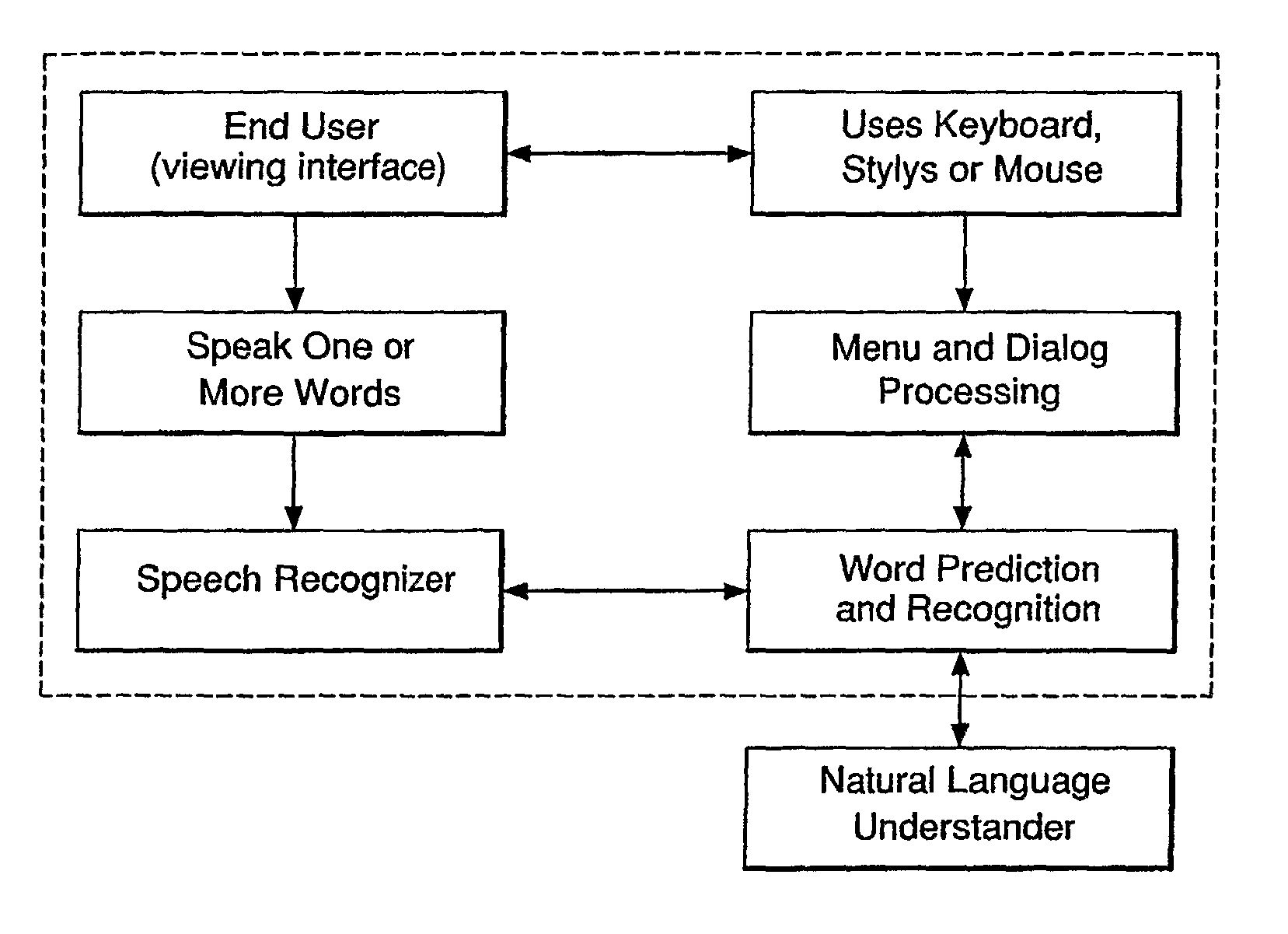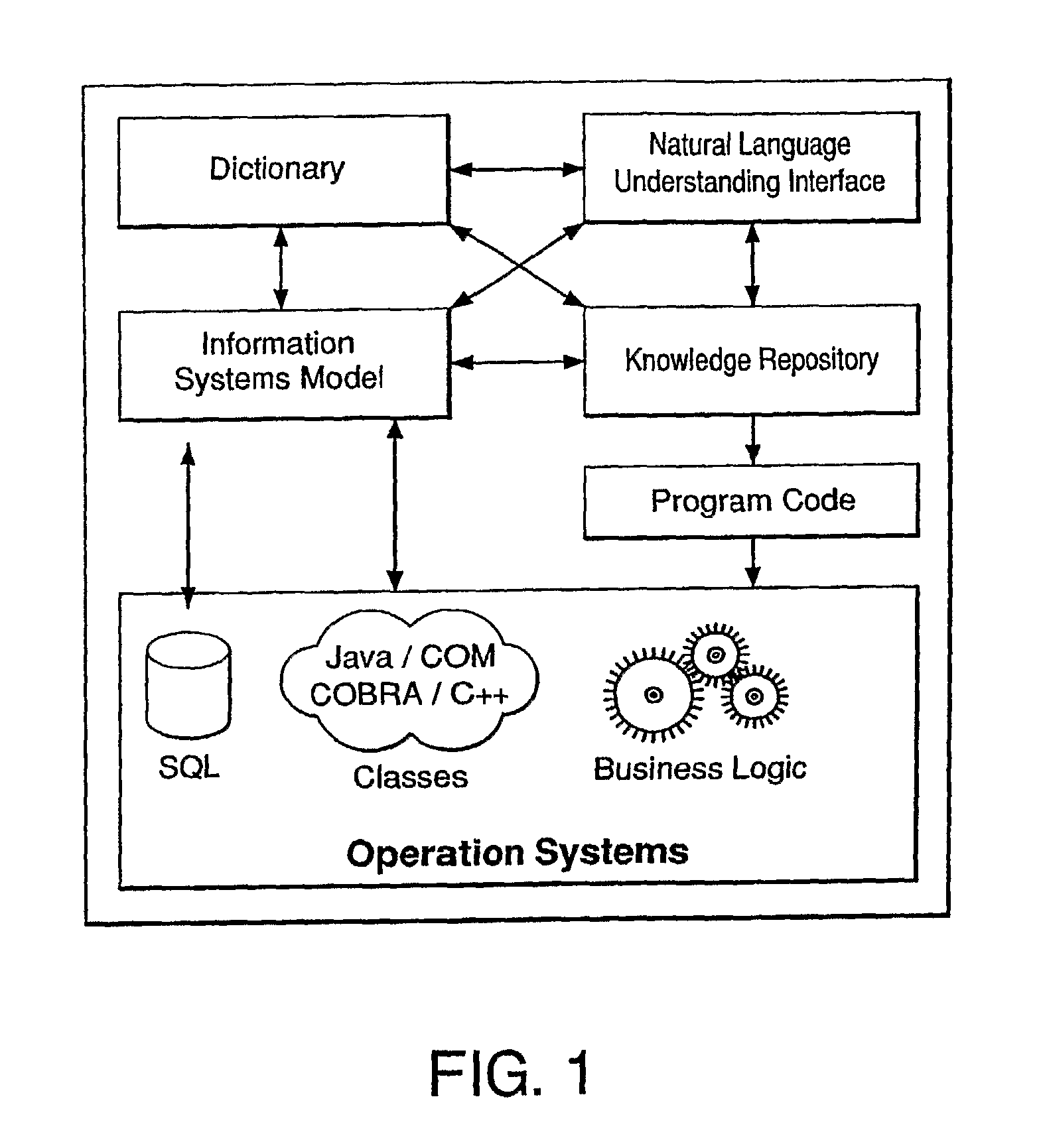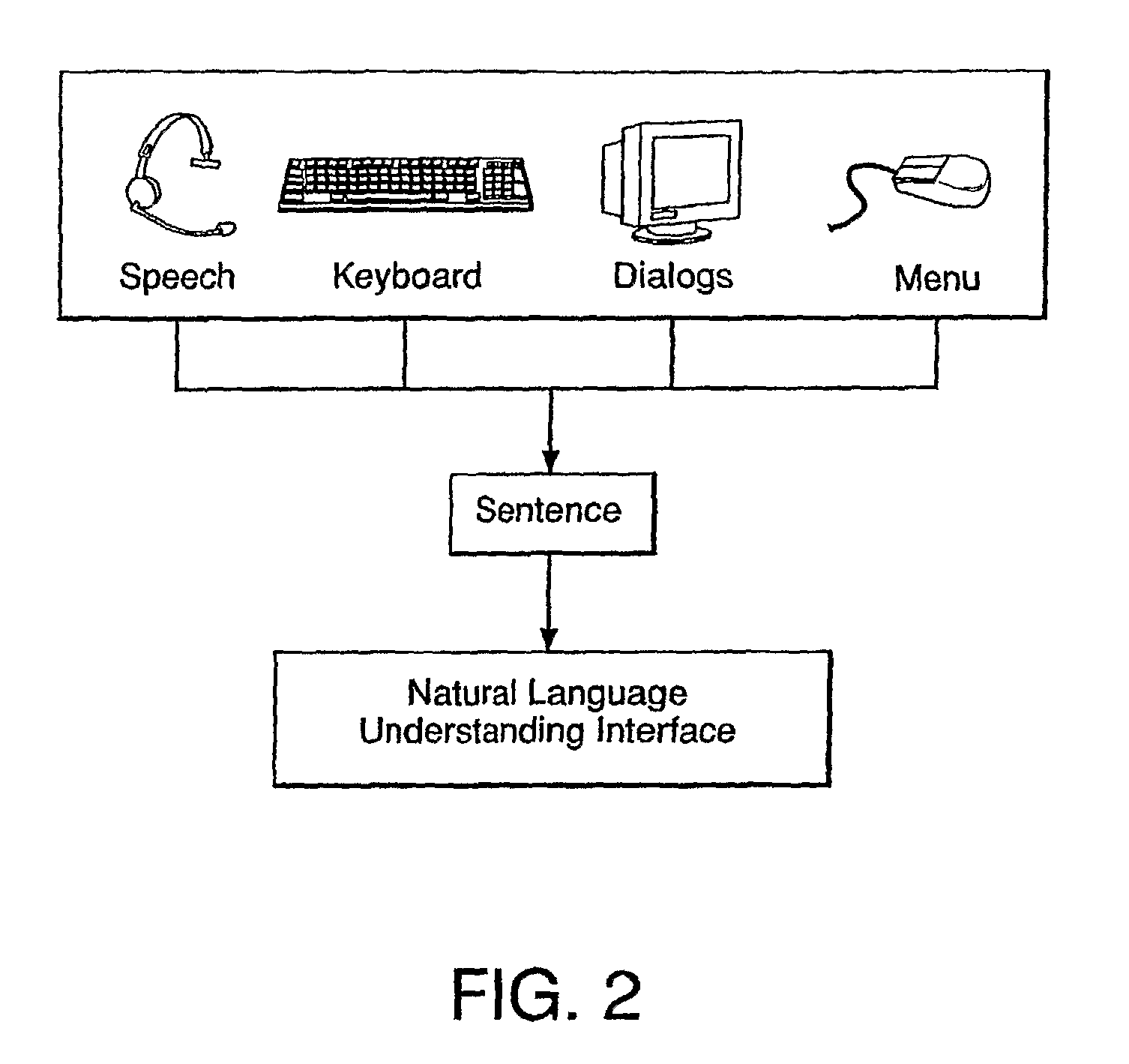System for enterprise knowledge management and automation
a knowledge management and automation technology, applied in the field of knowledge management systems, can solve the problems of not being able not being able to address the problem of managing knowledge about an underlying object or data model, and prior art systems strictly syntactic with little ability to understand the semantics of natural languag
- Summary
- Abstract
- Description
- Claims
- Application Information
AI Technical Summary
Benefits of technology
Problems solved by technology
Method used
Image
Examples
example i
Composing Sentences
[0125]Further embodiments of the present invention facilitates the creation of a composite sentence as an object within a computer program comprised of a linkage between two sentence objects where said linkage includes a connective where zero, one, or both of the linked sentences may be composite. In the preferred embodiment, a sentence, whether antecedent or consequent, is treated as an object which may be stored persistently, such as in a database, or transiently, such as in the memory of software program on a computer system. The linkage composing two sentences into a composite sentence with a connective is treated as an object which may also be stored either persistently or transiently. Such sentences and linkages may persist within the transient or permanent memory of computer system as data structures, objects, files, or database content.
[0126]The present invention facilitates the creation of a composite sentence within a computer program by appending a conn...
example ii
User Interface Aspects of Composition
[0127]The present invention facilitates the creation of a composite sentence by dragging an existing condition and dropping it as an antecedent condition onto a consequent sentence and specifying a connective (e.g., “if”, “only if”, “unless”, etc.) there between. This is accomplished by specifying a connective (e.g., “if”, “only if”, “unless”, etc.) and appending text (e.g., by typing or speaking) as a base condition to a consequent sentence. The present invention also facilitates the creation of a composite sentence sharing a consequent sentence by appending multiple antecedent conditions to the same consequent sentence by typing or speaking.
[0128]In one embodiment of the invention, a composite sentence can be rendered in an outline structure within a user interface or report where multiple antecedent conditions independently appended to the same consequent sentence are rendered in a folder or simply indented within the presentation of the conse...
example iii
The Semantics of Composition
[0130]A condition may be satisfied or applicable for zero or more sets of variable bindings at runtime, as determined in the results of a query (e.g., an SQL result set), the activations of production rules (e.g., using the Rete Algorithm), etc.
[0131]The present invention interprets an antecedent condition so as to be applicable for a set of variable bindings when:[0132]a. condition expressed within the antecedent condition itself is satisfied for a subset of the variable bindings; and[0133]b. ry necessary condition composed with said antecedent condition is satisfied for a subset of the variable bindings; and[0134]c. contraindicating condition composed with said antecedent condition is satisfied for a subset of the variable bindings; and[0135]d. any sufficient conditions are composed with said antecedent condition, at least one sufficient condition is satisfied for a subset of the variable bindings. and
[0136]Note that when a antecedent condition has eith...
PUM
 Login to View More
Login to View More Abstract
Description
Claims
Application Information
 Login to View More
Login to View More - R&D
- Intellectual Property
- Life Sciences
- Materials
- Tech Scout
- Unparalleled Data Quality
- Higher Quality Content
- 60% Fewer Hallucinations
Browse by: Latest US Patents, China's latest patents, Technical Efficacy Thesaurus, Application Domain, Technology Topic, Popular Technical Reports.
© 2025 PatSnap. All rights reserved.Legal|Privacy policy|Modern Slavery Act Transparency Statement|Sitemap|About US| Contact US: help@patsnap.com



